James L. Franklin
Chicago, Illinois, United States
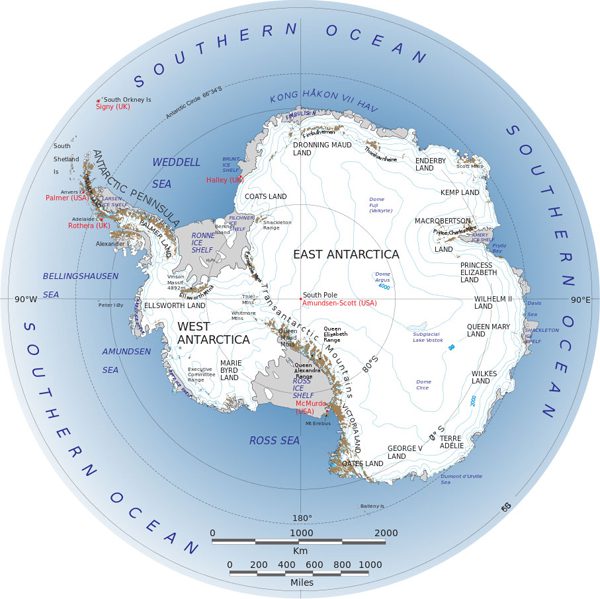
The Heroic Age of Antarctic Exploration refers to an era that began in 1897 with the Belgian Antarctic Expedition aboard the Belgica and ended in 1922 with the Shackelton-Rowett Expedition aboard the Quest. During this time, ten countries launched a total of seventeen major expeditions to explore the regions below the Antarctic Circle. The moniker “heroic” acknowledges the romance of discovery that permeated the Antarctic landscape and the adversities confronting these pioneers: nineteen expedition members perished in the effort. Motivated by the spirit of exploration and a desire to escape the ordinary, these ambitious men were eager to link their names and their nations with the pride of place—to be “the first.” They were poets, artists, dreamers, and men of science. To quote Apsley Cherry-Garrard, the youngest member of Robert Falcon Scott’s ill-fated Terra Nova Expedition of 1910 (a naturalist and protégé of Edward Adrian “Uncle Bill” Wilson):
“. . . for we are a nation of shopkeepers, and no shopkeeper will look at research which does not promise him a financial return within a year. And so you will sledge nearly alone, but those with whom you sledge will not be shopkeepers: that is worth a good deal. If you march your Winter Journeys you will have your reward, so long as all you want is a penguin’s egg.”
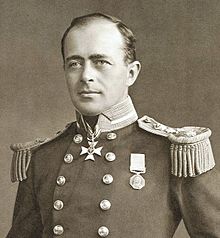 |
| Robert Falcon Scott |
At the end of the nineteenth century Sir Clements R. Markham was the driving force behind the British effort to explore the Antarctic. Markham first came under the spell of polar exploration at the age of twenty while he was posted as a midshipman aboard HMS Assistance, a ship bound for the Arctic in search of the missing expedition of Sir John Franklin and the 140 crew members of the HMS Erebus and the HMS Terror. After wintering with six other ships in the Barrow Strait, Markham resigned from the Navy, finding its humdrum duties and discipline intolerable. He then spent several years searching for the origin of the Incas in Peru and was elected to fellowship in the Royal Geographical Society (RGS) in 1855.
 |
| Roald Amundsen |
In 1893 Markham was elected president of the society and his first act was to invite the Scottish oceanographer John Murray to speak at a meeting held in November of that year. Murray was a veteran of the HMS Challenger Expedition—a four-year voyage (1872-76) devoted to the science of oceanography. Of the many discoveries emerging from that expedition were offshore granite specimens hinting at the presence of a continent toward the South Pole. At the meeting, Murray advocated a party of observers to winter on the Antarctic mainland “because nothing was known of the physical characteristics of the ice sheet or the land it covered.” Murray also believed onsite meteorological observations were key to understanding the world’s climate. Earlier in the nineteenth century, British, American, and French expeditions made positive sightings of land below the Antarctic Circle in the quadrant south of Australia. The great question before Murray’s audience was whether these were simply scattered islands or portions of a long postulated seventh continent.
Markham envisioned an expedition led by members of Her Majesty’s Royal Navy accompanied by a party of distinguished scientists who would overwinter below the Antarctic Circle and resolve this issue as well as characterize the climate, biota, and geology of Antarctica. Markham’s tireless lobbying over the next decade convinced the Royal Navy to lend men and ships to the National Antarctic Expedition of 1901 aboard HMS Discovery and the British Antarctic Expedition of 1910 aboard HMS Terra Nova. A key selling point for the Admiralty was the subject of terrestrial magnetism. Throughout the nineteenth century terrestrial magnetism and the precise location of the south magnetic pole was of interest to the British Navy because of the benefits it offered to navigation in the southern latitudes.
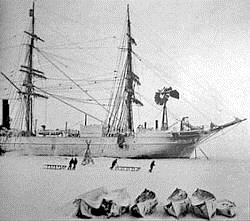 |
| HMS Discovery |
Expedition surgeons and Antarctic exploration
Many books have been devoted to the Heroic Age of Antarctic Exploration. The lives of Robert Falcon Scott, Roald Amundsen, and Ernest Shackleton are well known through the notoriety they achieved in the popular press and literature. It is the narrower purpose of this series to discuss the medical aspects of Antarctic exploration and the physicians who joined these expeditions.
Expedition surgeons, as they were called, had the responsibility for the health of the members of the ship’s company and of the expedition scientists on ship and shore. They were responsible for provisioning the expedition so as to address the nutritional needs of the Antarctic during the long months they would be without a means of resupply. It was during the Heroic Age of Antarctic Exploration that doctors performed a number of innovative surgical procedures under circumstances that tested their ingenuity and improvisatory skills.
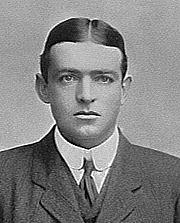 |
| Ernest Shackleton |
During Shackleton’s Imperial Trans-Antarctic Expedition of 1914-1917, the first surgical procedure with general anesthesia was performed under the worst imaginable conditions. Marooned on Elephant Island near the tip of the Antarctic Peninsula, surgeons James McIlroy and Alexander Macklin were forced to amputate the gangrenous toes of a crewmember, Percy Blackboro. Blackboro suffered severe frostbite injury during a harrowing voyage in open waters aboard a lifeboat after the ship Endurance was crushed in the ice pack of the Waddell Sea. Blackboro survived the surgery and every member of the Endurance returned home safely, a credit to the legendary leadership of Sir Ernest Shackleton.
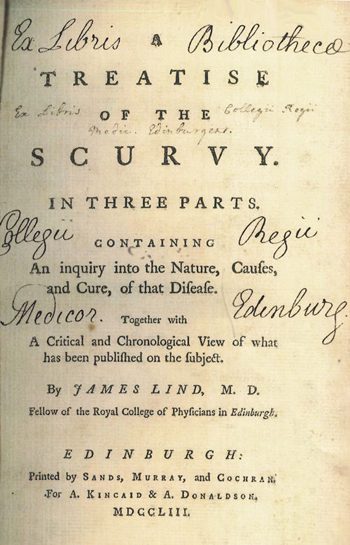
The scourge of scurvy, known since the time of Hippocrates, remained a dreaded threat on long ocean voyages. Even into the first decade of the twentieth century its cause was poorly understood. In a work hailed as one of the first randomized studies in the medical literature, A Treatise of the Scurvy, published in 1753, Scottish surgeon James Lind of the Royal Navy documented the efficacy of citrus fruits in the treatment of the disease. Subsequent inconsistent results stemming from variable extracts of these fruits used aboard Her Majesty’s ships left the matter in doubt. Theories relating to the quality and spoilage of tinned meats and “ptomaine poisoning” clouded the issue and the duties of expedition surgeons included the regular inspection of these products. The nutritional, caloric, and fluid requirements of Arctic and Antarctic travel were poorly understood, especially as it would apply to the men who ventured onto the 10,000-foot elevation of the vast Antarctic continental plateau. The problems of snow blindness, frostbite, and hypothermia were poorly appreciated, and prevention, requiring the proper design of equipment, was often neglected. The severe psychological effects of the darkness during the Antarctic winter—now categorized under the rubric of Seasonal Affective Disorder—were yet to be recognized.
The physicians who volunteered for the Antarctic expeditions all had interests beyond their duties as expedition surgeons. While medicine was their “day job,” they all nurtured pet interests. Generally these were scientific and included geology and biology. Edward A. Wilson, a talented artist, was distinguished through the images of the Antarctic landscape he created. With the exception of Wilson, who perished along with Scott during their ill-fated dash to the South Pole, the biographies of these physicians extend beyond their Antarctic adventures.
The doctors who were part of the Heroic Age of Antarctic Exploration made important medical contributions to our understanding of human adaptation and survival in the extreme conditions of the polar climes. While the challenges they faced and the experience they gained contributed to the success of expeditions that would follow, there were no stunning achievements. Knowledge of human physiology would have to advance before the nutritional and caloric demands of the polar environment could be quantitatively studied. The discovery that the cause of scurvy was vitamin C deficiency was just around the corner.1 Nonetheless, four of these expedition surgeons made contributions in their own way. Frederick Cook’s observations on the psychological effects of prolonged darkness on the members of his expedition are of note. Edward A. Wilson contributed to the science of ornithology through his observations on the life cycle of the emperor penguins. Reginald Koetlittz contributed to the science of geology and the understanding of our seventh continent. Both he and Edward Leicester Atkinson helped demonstrate that the Antarctic was not a sterile environment as had been thought. While it was an era when nationalistic aspirations still prevailed in Antarctic exploration, these expedition surgeons were doctors beyond borders who were willing to practice their profession far from the amenities of home. Today there are no borders in Antarctica. The Antarctic Treaty Systems of 1959 signed by twelve nations designates the continent politically neutral. The Antarctic has been set aside as an environmental refuge for scientific study protected from military and economic exploitation.
References
- Day, David. Antarctica: A Biography. New York: Oxford University Press, 2013.
- Cherry-Garrard, Apsley. The Worst Journey in the World with Scott in Antarctica 1910-1913. Great Britain: Constable and Company, 1922.
- Huntford, Roland. The Last Place on Earth. New York: Atheneum, 1985.
- Fodstad, H., D. Kondziolka, B. P. Brophy, D. W.
- Roberts, and J. P. Girvin. “Arctic and Antarctic Exploration including the Contributions of Physicians and Effects of Disease in the Polar Regions.” Neurosurgery 44, no. 5 (1999): 925-39.
- Guly, Henry R. “Surgery and anesthesia during the heroic age of Antarctic exploration (1895-1922).” British Medical Journal 347, 2013.
Notes
- In 1910 Alex Holst and Theodor Frolich, two Norwegian physicians, developed an animal model for scurvy in guinea pigs fed a diet of grain and flour that could be cured with fresh foods. In 1927, the Hungarian biochemist Szent-Györgi isolated hexuronic acid—subsequently named ascorbic acid. Experimental human scurvy was produced and cured with ascorbic acid by investigators at Harvard in 1940. It would subsequently be proven that almost all plant and animal species, including seals and penguins, synthesize vitamin C in their tissues. Notable exceptions include bats and primates of the suborder Anthrodoidea.
JAMES L. FRANKLIN, MD is a gastroenterologist and associate professor emeritus at Rush University Medical Center. He also serves on the editorial board of Hektoen International and as the president of Hektoen’s Society of Medical History & Humanities.
Summer 2015 | Sections | Physicians of Note

Leave a Reply